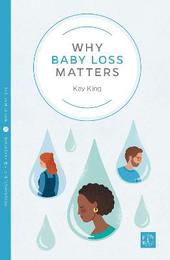
|
Why Baby Loss Matters
Paperback / softback
Main Details
| Title |
Why Baby Loss Matters
|
| Authors and Contributors |
By (author) Kay King
|
| Series | Pinter & Martin Why it Matters |
|---|
| Physical Properties |
| Format:Paperback / softback | | Pages:176 | | Dimensions(mm): Height 172,Width 111 |
|
| Category/Genre | Coping with death and bereavement
Pregnancy, birth and baby care |
|---|
| ISBN/Barcode |
9781780666358
|
| Classifications | Dewey:155.937 |
|---|
| Audience | |
|---|
| Illustrations |
1 b/w illustration
|
|
Publishing Details |
| Publisher |
Pinter & Martin Ltd.
|
| Imprint |
Pinter & Martin Ltd.
|
| Publication Date |
5 November 2020 |
| Publication Country |
United Kingdom
|
Description
The loss of a baby, however it occurs, can be heartbreaking and painful and leave parents in need of support as they grieve. While awareness about baby loss is increasing, the suffering and sadness, isolation and loneliness parents feel is often invisible and it can be hard for them to reach out, and for those around them to know how best to support them. Why Baby Loss Matters explores what happens when families experience baby loss or the end of a pregnancy, drawing on the first-hand experiences of parents who have navigated life and the fourth trimester without their baby, and the vital work of charities and services which offer support. By examining different approaches to coping with the loss of a baby and keeping memories alive, the book offers insight into the ways that families have found the support and peace that they need to continue living after saying goodbye.
Author Biography
Kay King is a birth worker and maternity rights activist in the South West. She is the Executive Director for White Ribbon Alliance UK and works to support several leading maternity organisations with strategic growth, campaigning, fundraising and governance development. Kay is also a doula and Grief Recovery Method specialist, who now focuses on supporting birth within the context of loss. She is involved in partnership work to deliver and strengthen maternity education within the context of secondary aged relationships and sex curriculum delivery.
|